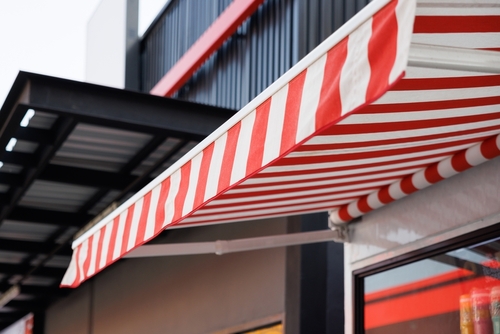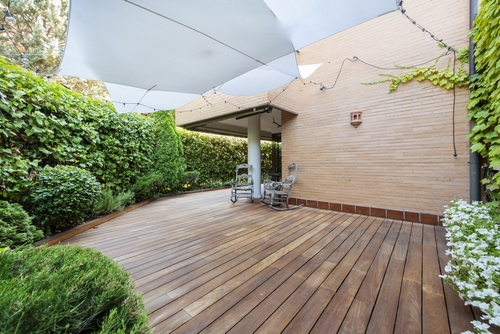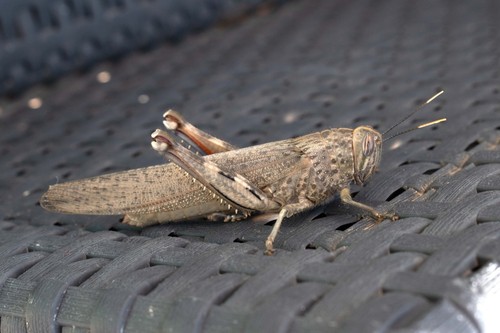
How Can Customized Awnings Enhance Your Outdoor Space?
May 30, 2023
Awnings Installation for Garden and Patio Spaces
July 26, 2023What is the Lifespan of an Average Awning?
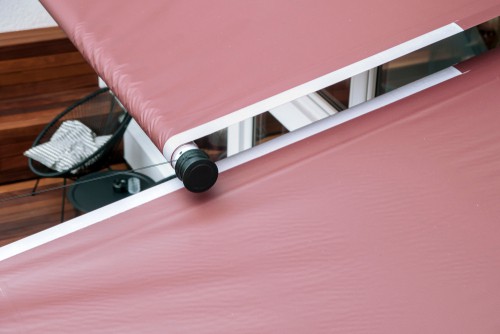
What is the Lifespan of an Average Awning
Have you ever wondered, “What is the lifespan of an average awning?” This question holds particular relevance for people living in countries like Singapore, where the tropical climate can impact the longevity of these exterior elements.
This comprehensive guide delves deep into understanding awning lifespan, factors that influence it, and ways to prolong it.
What is the Lifespan of an Average Awning?
An awning’s lifespan hinges on numerous factors. On average, you can expect an awning to last between 5 to 15 years, provided it receives proper care and maintenance.
However, some top-tier, well-maintained awnings have been known to last upwards of 20 years.
Material Considerations
The material of your awning plays a crucial role in determining its lifespan. In Singapore, awnings are typically made from:
- Polyester
- Acrylic
- Vinyl
Polyester awnings are renowned for their affordability and resilience to wear and tear. However, their lifespan tends to be shorter (roughly 5-8 years).
Acrylic awnings, while slightly pricier, offer an extended lifespan due to their ability to withstand sunlight and rain damage. These awnings typically last 8-12 years.
Vinyl awnings strike a balance between the two, offering affordability and a slightly longer lifespan than polyester (approximately 10-15 years). They also provide excellent waterproofing.
Factors Influencing the Lifespan of an Awning
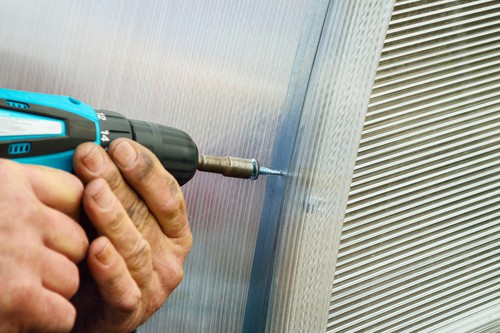
Quality of Installation
Poor installation can drastically cut short an awning’s lifespan.
Hiring experienced professionals is crucial to ensure the awning is installed correctly, reducing the risk of damage due to poor attachment.
Maintenance Practices
The lifespan of an awning can be greatly increased with regular maintenance.
This includes cleaning to remove dirt and debris, which can lead to mold and mildew buildup, and performing periodic checks for signs of wear and tear.
Exposure to Elements
In Singapore’s tropical climate, awnings are subjected to intense sun and rain.
UV rays can cause the fabric to fade, while continuous exposure to rain can lead to water damage.
However, modern awning materials are designed to be resilient against these factors, and proper maintenance can mitigate the damaging effects.
Enhancing the Lifespan of Your Awning
Proper Cleaning
Routine cleaning is crucial to prolonging your awning’s life.
This doesn’t mean simply hosing down; you’ll need to scrub gently with a soft brush and mild soap to remove stubborn dirt and prevent mold growth.
Regular Inspections
Regular inspections can catch early signs of wear and tear. Look out for fading colors, fraying edges, or loose fittings.
Addressing these issues promptly can prevent further damage and prolong your awning’s lifespan.
Professional Maintenance
Consider hiring professionals for annual or bi-annual maintenance.
They’re well-versed in handling different types of awnings and can provide expert care, ensuring your awning remains in top shape for longer.
FAQs about Awnings
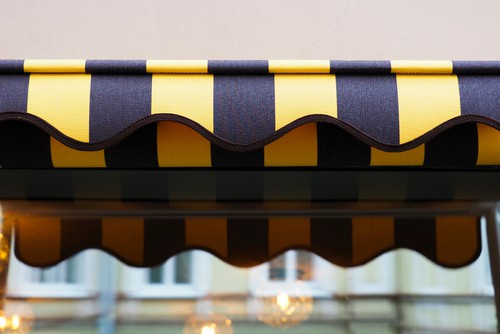
How often should I clean my awning?
A: It’s recommended to clean your awning at least twice a year.
However, if your awning is in a high-pollution area or is subjected to harsh weather conditions, consider cleaning it more frequently.
Can I repair a damaged awning?
A: Minor damages like small tears or loose fittings can be repaired. However, replacing the awning might be more cost-effective for significant damage.
Are retractable awnings longer-lasting?
A: Retractable awnings can be retracted when unused, reducing exposure to harmful elements.
This can potentially extend their lifespan compared to stationary awnings.
Choosing the Right Awning for Singapore’s Climate
Considering Singapore’s climate, making a well-informed choice when selecting an awning is vital for longevity.
Material Suitability
As discussed earlier, the material of the awning plays a significant role in its lifespan.
With their excellent waterproofing qualities, Vinyl awnings are an excellent choice for Singapore’s frequent rainfall.
On the other hand, acrylic awnings offer superior resistance to UV radiation, making them suitable for intense sunlight.
Retractable vs. Stationary Awnings
Retractable awnings offer the advantage of being drawn in during adverse weather conditions or when not used, potentially increasing their lifespan.
On the other hand, stationary awnings are generally more robust and can withstand harsh weather conditions better.
The Cost vs. Lifespan Equation
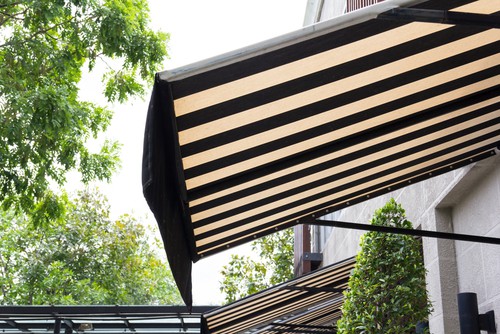
An essential factor to consider when looking at the lifespan of an awning is the cost versus lifespan equation.
Is it more cost-effective to buy a more expensive awning that lasts longer or a cheaper one that might need replacing sooner?
Upfront Costs
Initially, high-quality awnings may seem costly. But when you consider the potential lifespan and durability, they can often be a sound investment.
While more expensive, materials like acrylic offer a better lifespan-to-cost ratio due to their longer life.
Maintenance and Replacement Costs
Frequent replacements and repairs of low-quality awnings can add up over time.
Not to mention the inconvenience of having your outdoor space in disarray every few years.
Therefore, it’s essential to factor in these ongoing costs when calculating the total cost of ownership.
Is It Time to Replace Your Awning?
While proper care and maintenance can significantly extend an awning’s lifespan, there comes a time when replacement becomes inevitable.
Signs of Wear and Tear
Common signs that your awning needs replacing include faded fabric, fraying or tearing at the edges, and deformation or rusting of the metal parts.
If these signs are present and frequent repairs are required, it might be time for a new awning.
Consider a Professional Assessment
If you’re unsure whether your awning needs replacing, consider getting a professional assessment.
An awning specialist can inspect your awning for signs of damage and provide expert advice on whether repair or replacement is the most viable option.
What is the Lifespan of an Average Awning? – Conclusion
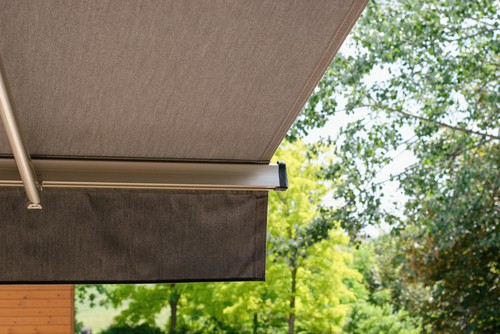
Why wait for the sun to dictate your outdoor activities?
A durable, stylish awning can create a comfortable outdoor living space for you and your family, even on the warmest of days.
But to ensure you get an awning that stands the test of time, you need to partner with professionals who know their awnings inside out.
Whether you’re considering installing a new awning or need advice on maintaining your current one, our team of experts is ready to help.
We can provide detailed information on various types of awnings, materials, installation procedures, and maintenance practices. We’ll guide you in making the best decisions to ensure your awning’s longevity.
Contact us today, and let’s explore how an awning can transform your outdoor space and stand strong for many years. Your new awning awaits – let’s bring it to life!


